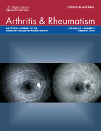β-catenin regulates parathyroid hormone/parathyroid hormone–related protein receptor signals and chondrocyte hypertrophy through binding to the intracellular C-terminal region of the receptor
Abstract
Objective
To investigate the underlying mechanisms of action and functional relevance of β-catenin in chondrocytes, by examining the role of β-catenin as a novel protein that interacts with the intracellular C-terminal portion of the parathyroid hormone (PTH)/PTH-related protein (PTHrP) receptor type 1 (PTHR-1).
Methods
The β-catenin–PTHR-1 binding region was determined with deletion and mutagenesis analyses of the PTHR1 C-terminus, using a mammalian two-hybrid assay. Physical interactions between these 2 molecules were examined with an in situ proximity ligation assay and immunostaining. To assess the effects of gain- and loss-of-function of β-catenin, transfection experiments were performed to induce overexpression of the constitutively active form of β-catenin (ca-β-catenin) and to block β-catenin activity with small interfering RNA, in cells cotransfected with either wild-type PTHR1 or mutant forms (lacking binding to β-catenin). Activation of the G protein α subunits Gαs and Gαq in the cells was determined by measurement of the intracellular cAMP accumulation and intracellular Ca2+ concentration, while activation of canonical Wnt pathways was assessed using a TOPflash reporter assay.
Results
In differentiated chondrocytes, β-catenin physically interacted and colocalized with the cell membrane–specific region of PTHR-1 (584–589). Binding of β-catenin to PTHR-1 caused suppression of the Gαs/cAMP pathway and enhancement of the Gαq/Ca2+ pathway, without affecting the canonical Wnt pathway. Inhibition of Col10a1 messenger RNA (mRNA) expression by PTH was restored by overexpression of ca-β-catenin, even after blockade of the canonical Wnt pathway, and Col10a1 mRNA expression was further decreased by knockout of β-catenin (via the Cre recombinase) in chondrocytes from β-catenin–floxed mice. Mutagenesis analyses to block the binding of β-catenin to PTHR1 caused an inhibition of chondrocyte hypertrophy markers.
Conclusion
β-catenin binds to the PTHR-1 C-tail and switches the downstream signaling pathway from Gαs/cAMP to Gαq/Ca2+, which is a possible mechanism by which chondrocyte hypertrophy may be regulated through the PTH/PTHrP signal independent of the canonical Wnt pathway.




